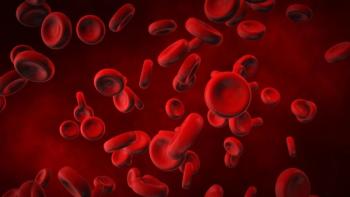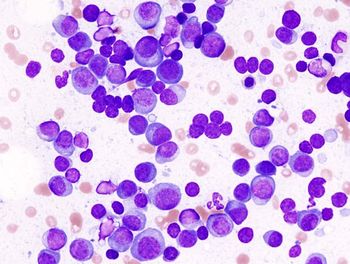
- Oncology Vol 28 No 1S
- Volume 28
- Issue 1S
(P049) Simultaneous Integrated Boost–Intensity-Modulated Radiation Treatment in Head and Neck Cancer: Outcomes From a Single-Institution Series
The main aim of this study is to assess the acute and late toxicity as well as clinical outcomes in patients with head and neck cancer treated with SIB-IMRT at a National Cancer Institute (NCI)-designated comprehensive cancer center.
Peyman Kabolizadeh, MD, PhD, Hebist Berhane, BA, Ryan P. Smith, MD, Dwight E. Heron, MD, FACRO, FACR; University of Pittsburgh Cancer Institute
Background: Locoregional (LR) failures remain a major problem in locally advanced head and neck cancers following chemoradiation. Despite aggressive combined treatment modalities for advanced head and neck cancer during the last decade, LR recurrence rate remains suboptimal. Patients are generally treated with sequentially planned radiation treatment in which the same dose is delivered to shrinking tumor volumes. Accelerated hypofractionated schedules with the simultaneous integrated boost–intensity-modulated radiotherapy (SIB-IMRT) technique have gained interest in hopes of obviating accelerated repopulation. The main aim of this study is to assess the acute and late toxicity as well as clinical outcomes in patients with head and neck cancer treated with SIB-IMRT at a National Cancer Institute (NCI)-designated comprehensive cancer center.
Materials and Methods: Between January 2005 and December 2012, 89 patients (67 males, mean age 61.4 y) with head and neck cancers were treated with definitive SIB-IMRT at the University of Pittsburgh Cancer Institute. Seventy patients (79%) received chemotherapy concurrent with radiation. The median Karnofsky performance score (KPS) at the time of treatment was 90 (range: 50–100). Kaplan-Meyer survival analyses were used to estimate local control (LC) and overall survival (OS) rates. The multivariate Cox regression method was used to model predictors of outcome.
Results: The median follow-up from SIB-IMRT was 21 months (range: 12.0–24.0 mo); 22.2% of patients had stage I/II disease, while 21.2% and 56.5% of patients had stage III and IV disease, respectively. The majority of patients had oropharyngeal (35%) and laryngeal (30%) cancer, while the remaining had oral cavity, nasopharynx, hypopharynx, and salivary cancers. The median prescription dose was 70 Gy (range: 60.0–75.6 Gy) delivered in 32 (range: 28–36) fractions. The high-risk tumor volume received a median dose of 2.18 Gy (range: 2.0–2.5 Gy) per fraction, while the intermediate-risk and low-risk tumor volumes received a median dose of 2 Gy (range: 1.8–2.25 Gy) and 1.8 Gy (range: 1.64–2.0 Gy) per fraction, respectively. The 1-/2- year LR control, OS, and distant metastases-free (DMF) survival rates were 72%/70%, 80.2%/71%, and 89%/83%, respectively. Twenty-seven patients (30%) had acute grade 3 toxicity, while none had grade 4 acute toxicity. Only two patients (3%) had grade 3 late toxicities, and no grade 4 late toxicities were noted. On univariate analysis, T-stage, and gross tumor volume (GTV) were significant predictors of local failure, while on multivariate analysis, only T-stage was a significant predictor of local failure. On univariate analysis, HPV, number of pack-years of smoking, and KPS were significant predictors of OS, while on multivariate analysis, no factors were found to be predictors of OS.
Conclusion: IMRT using SIB is an effective and safe technique in the treatment of patients with head and neck cancer, even with concurrent chemotherapy. Our results are comparable with those obtained with conventional RT. Given this, along with the inherent superior dose homogeneity and lower total number of fractions, SIB-IMRT can be offered as a standard treatment.
Acknowledgment:The project was founded by the Thomas H. Nimick, Jr. Competitive Research Fund.
Articles in this issue
Newsletter
Stay up to date on recent advances in the multidisciplinary approach to cancer.

















































































